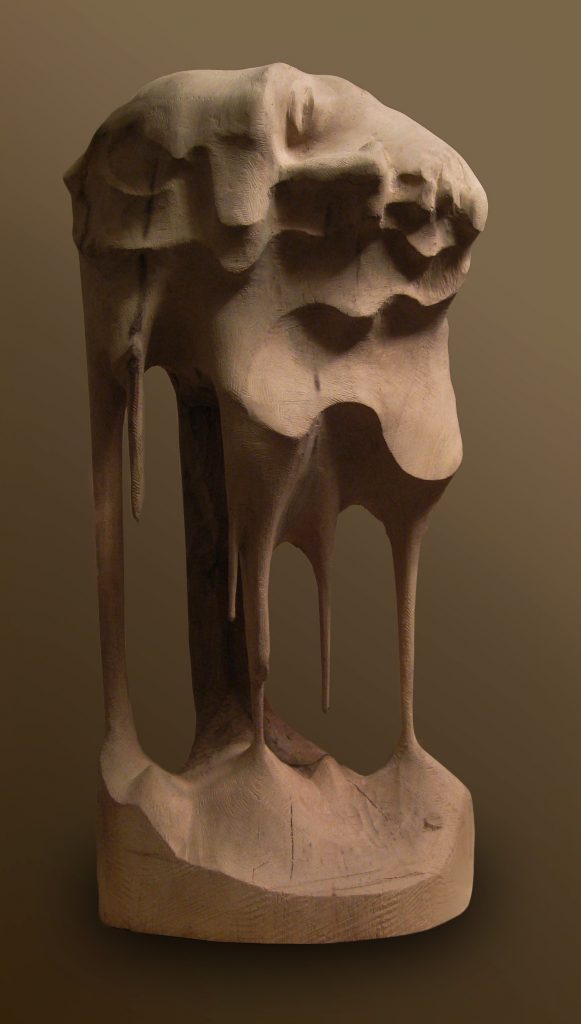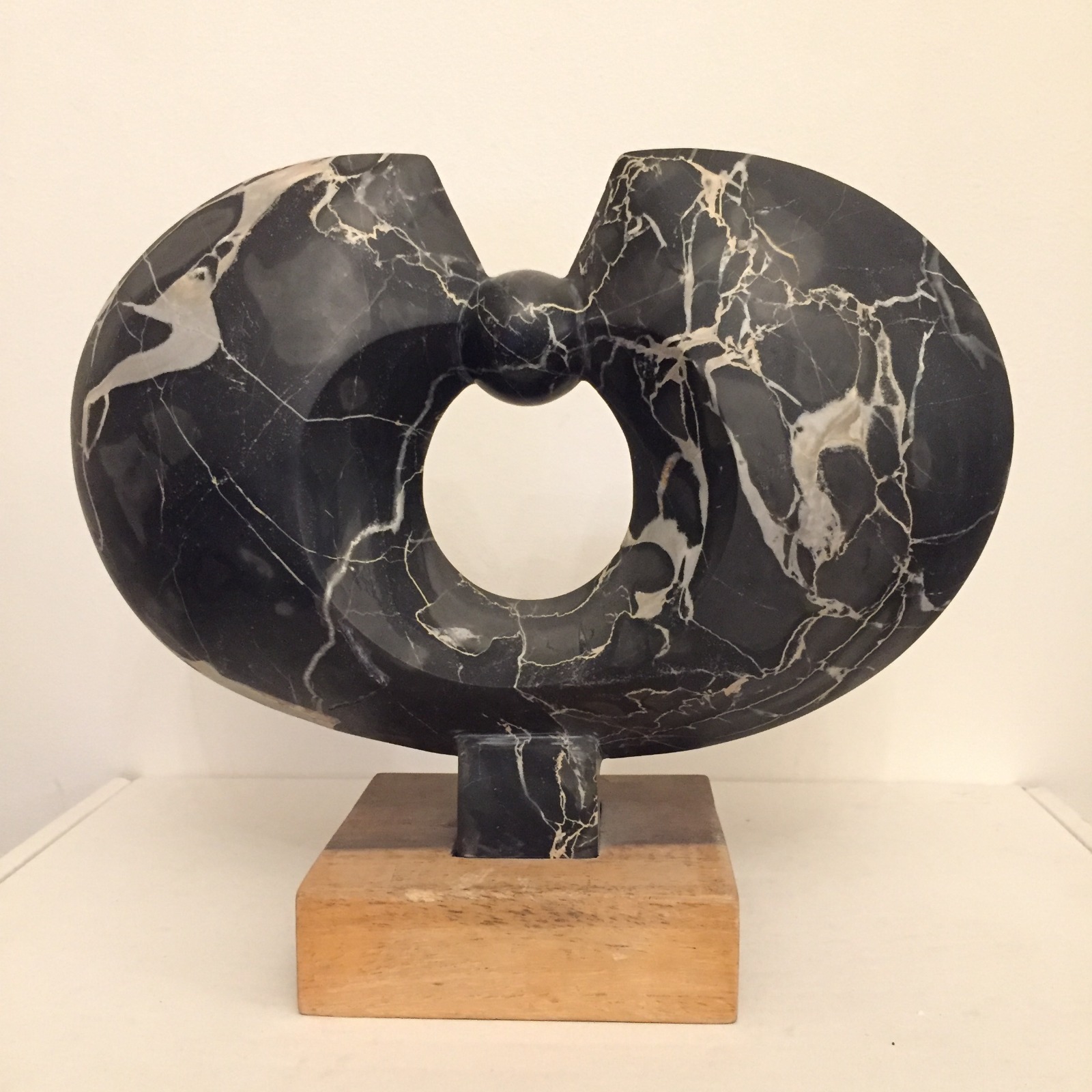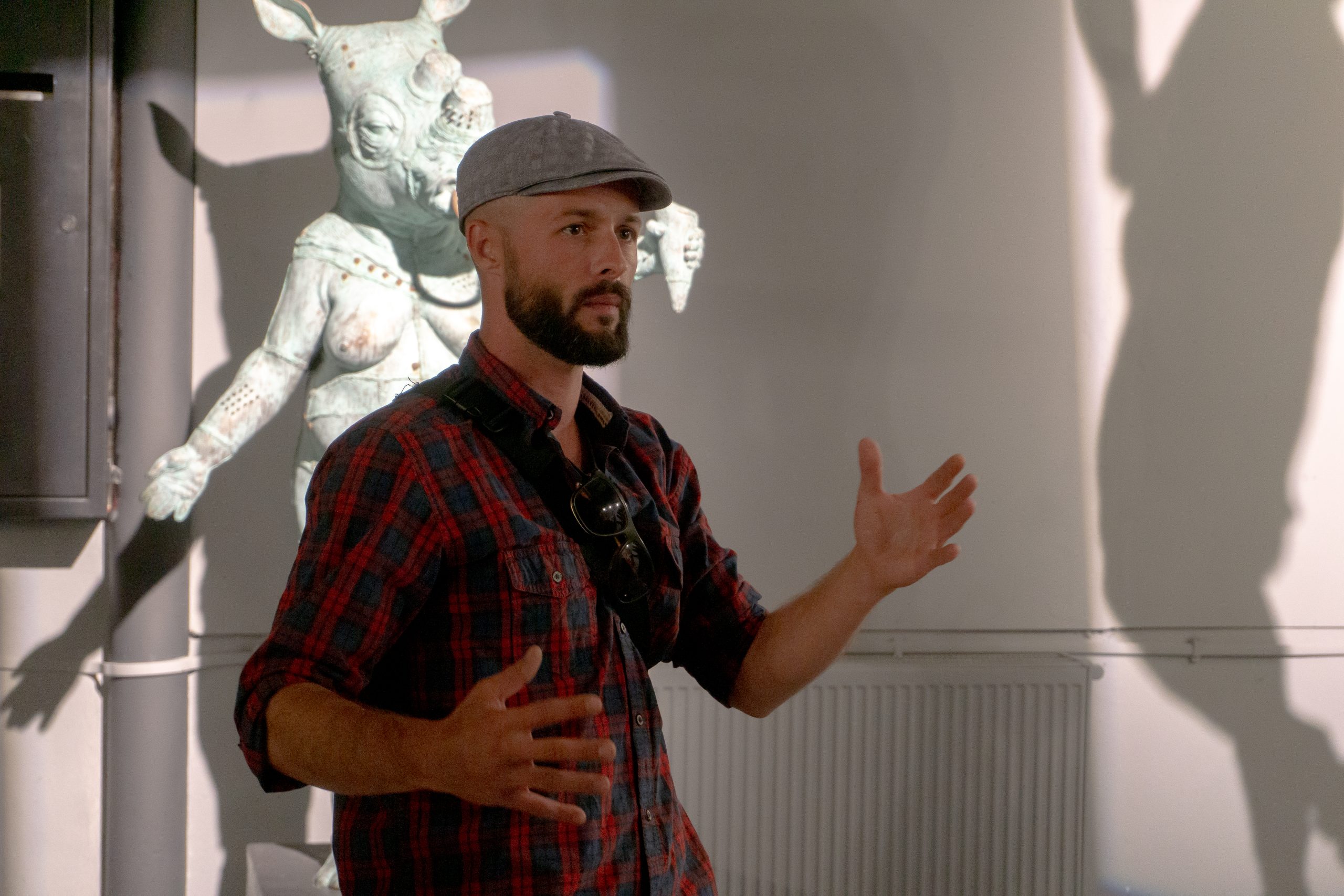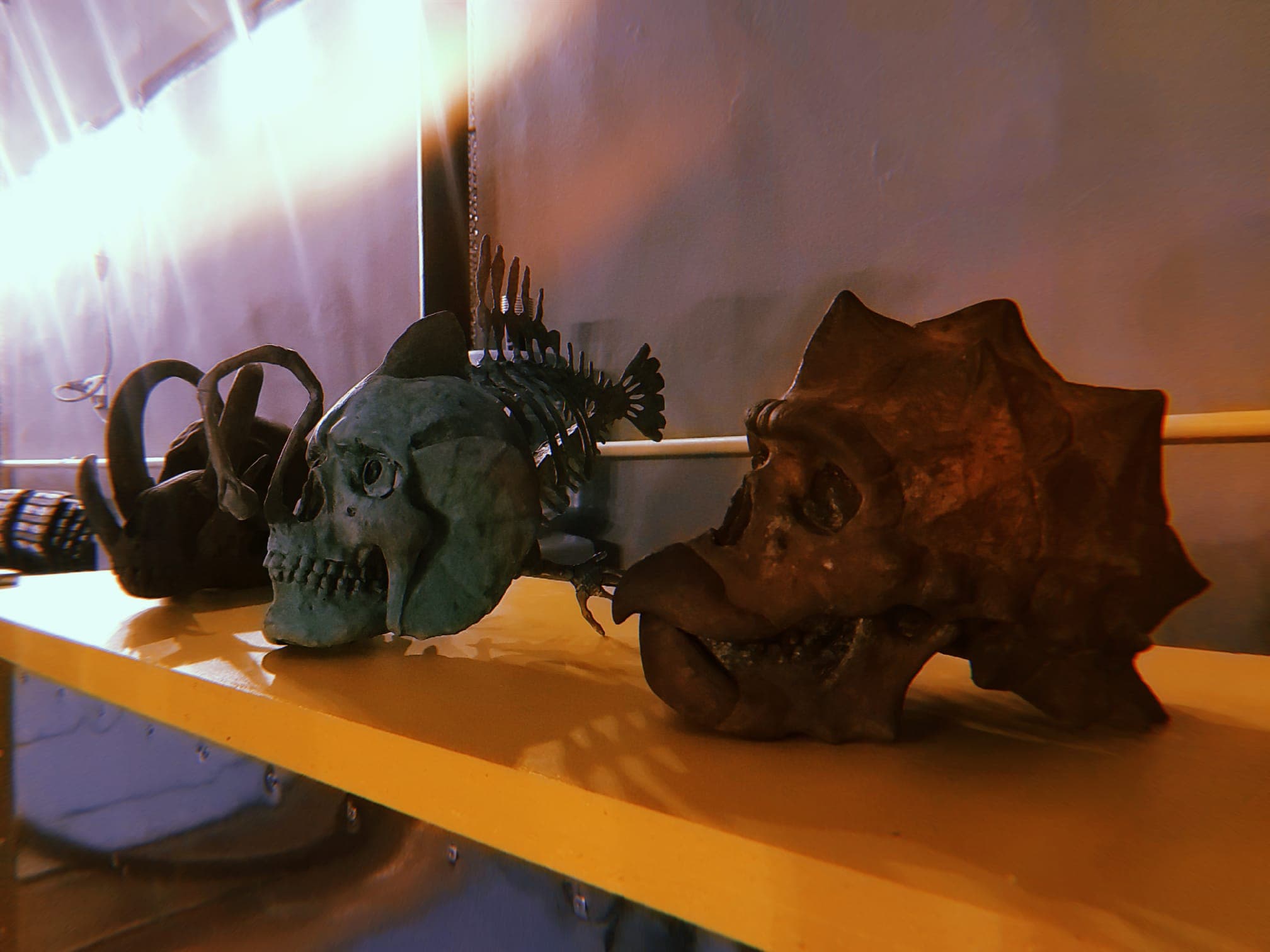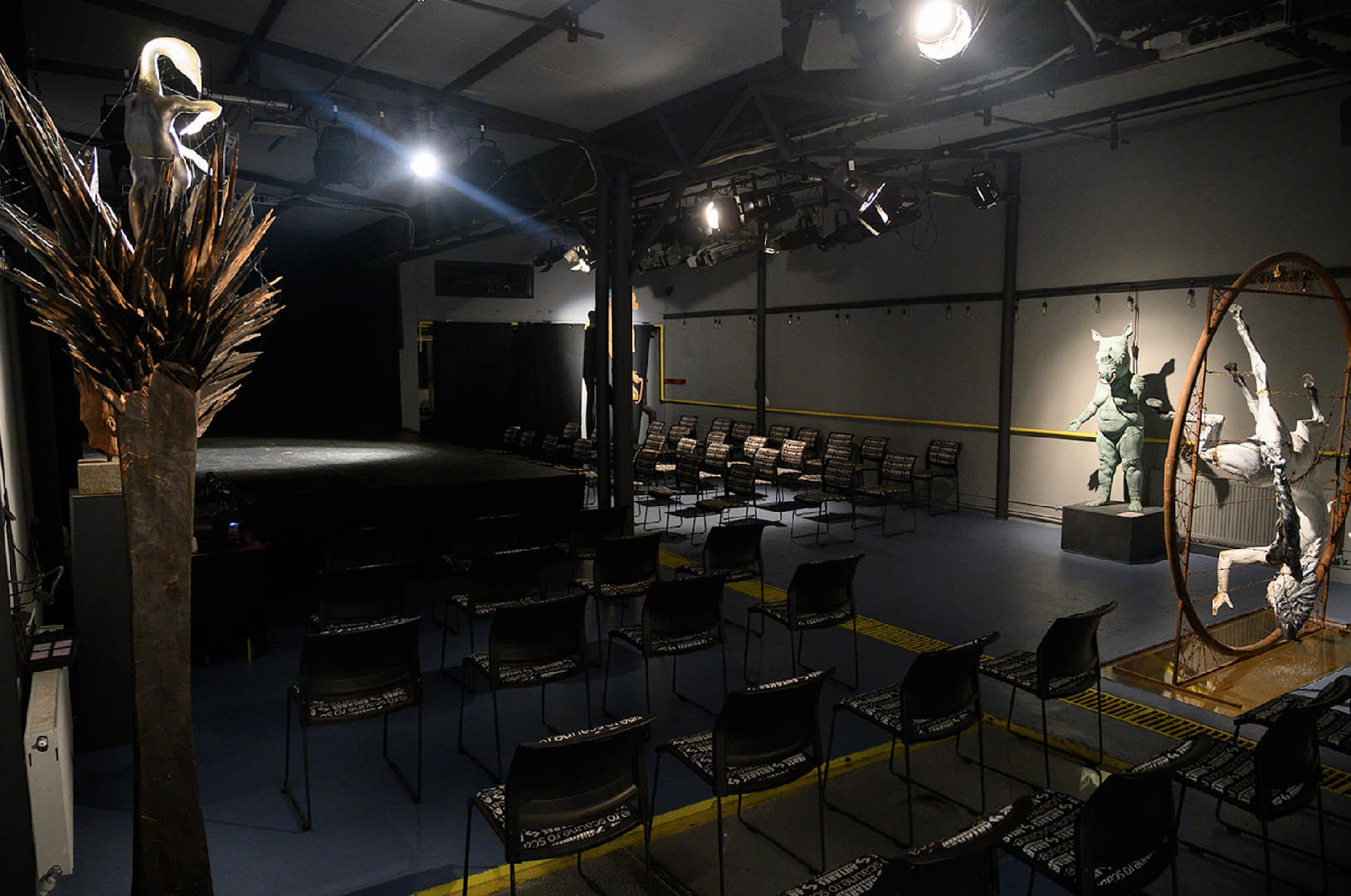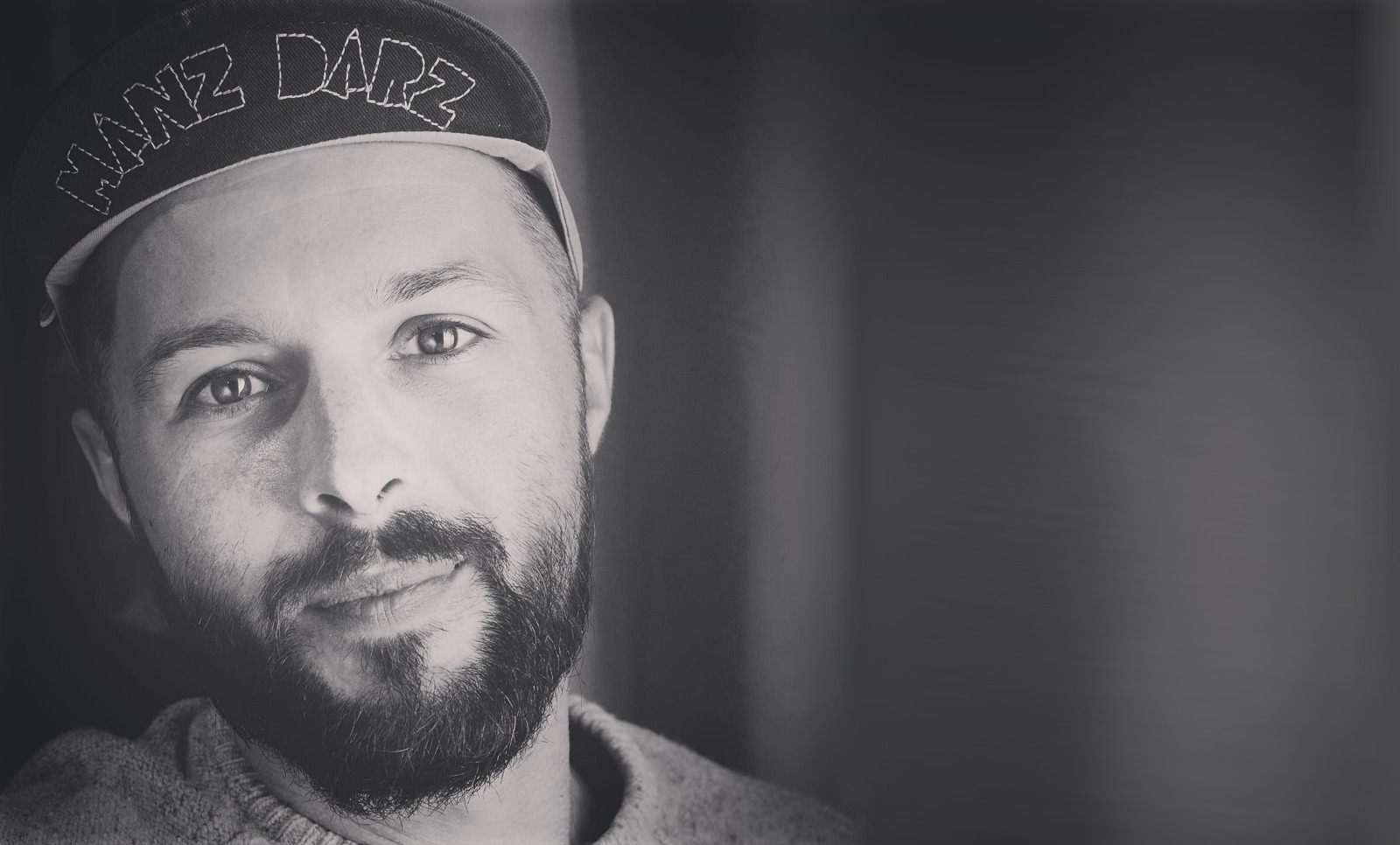Radu Tudor Panait comes from a family of artists. Born in Bucharest in 1985, Radu studied sculpture at the National University of Arts in Bucharest (2007). Further, he followed a mater programme at the Accademia di Belle Arti di Carrara, Italy, completed with master’s studies at UNArte Bucharest.
Radu Panait has obtained numerous awards (Special Prize – Sculpture Camp in Sassetta, Italy – 2010, Special Prize – Sculpture Camp in Volterra, Italy – 2010). He was the sculptor who was entrusted with the project of reconstructing the face of Mihai Viteazul, an artwork that entered the collection of the Bucharest City Museum.
Radu Panait has had multiple personal and group exhibitions, the most recent being: ART HALLE – “HUMAN BEHAVIOUR” 2019, ATELIER 35 – “TROPHY HUNTER” 2019, CAROL 53 – “PEOPLE AND BOMBS” 2021, EFORIE COLORAT – ARTISTIC RESIDENCE 2021, ARTSAFARI 2021, MUSEUM OF THE ROMANIAN PEASANT “UNFAIR REALITIES” 2022, HYBRID ART FAIR MADRID 2022, ART SAFE – “LUST IS IN THE AIR” 2022, “FATUM/ I made this reality”, Teatrul Nou 2022.
Making sculpture was hazard or rather a personal choice?
Both. Looking now, then it was a choice. That is what I thought, but it also happened by chance. Nothing is totally controllable. Let’s say I drew above average. My parents being artists were called to a meeting in the second grade. They were told that I was talented and that I inherited them. At home, my dad broke the pencils and took everything he could to make me stop drawing. I repelled and took a few healthy ones. I did not put the pencil on the paper to draw until the eighth grade. That was my parents’ fear: not to end up like them, not to be poor. I did not feel poverty. When the ball broke, I would sew it up. It was good for me. The fear was theirs.
And in the eighth grade came the high school tie-break, depending on the grades. Doing school at the center, where there were high standards, in class, I had 7, and in the exam, I had 9. But the provincials came with 10 on the line and did not know how to read. Apart from welding, I had the chance at a vocational high school where the exam was taken into account as a general average of grades. It was my only chance to increase my average. I drew after 7 years of hiatus. I took the exam to enter the “Nicolae Tonitza” High School of Fine Arts. Depending on the grade and the choice of the section you wanted to enter, you were assigned. It was in a way, the choice of my parents on the first places being: Design or Advertising/Computer Graphics – everything we saw could be jobs of the future. I wanted to go to Sculpture. It was the eighth option I selected. I knew I was ready and I trusted myself. I gave the three exams. Next to me was a colleague who asked me for a little help. She took 10 on all the exams. I took 6, 7, and 8. Having a low average I was not assigned to the first options on the list, but precisely to the eighth, to Sculpture. Once I went to Tonitza, everything was interesting to me and I was observing… After my first year of high school, I won two wood and stone carving camps. After my second year, I win the Olympics. Then slowly, slowly, my parent’s desire of becoming a doctor or a lawyer crumbled.
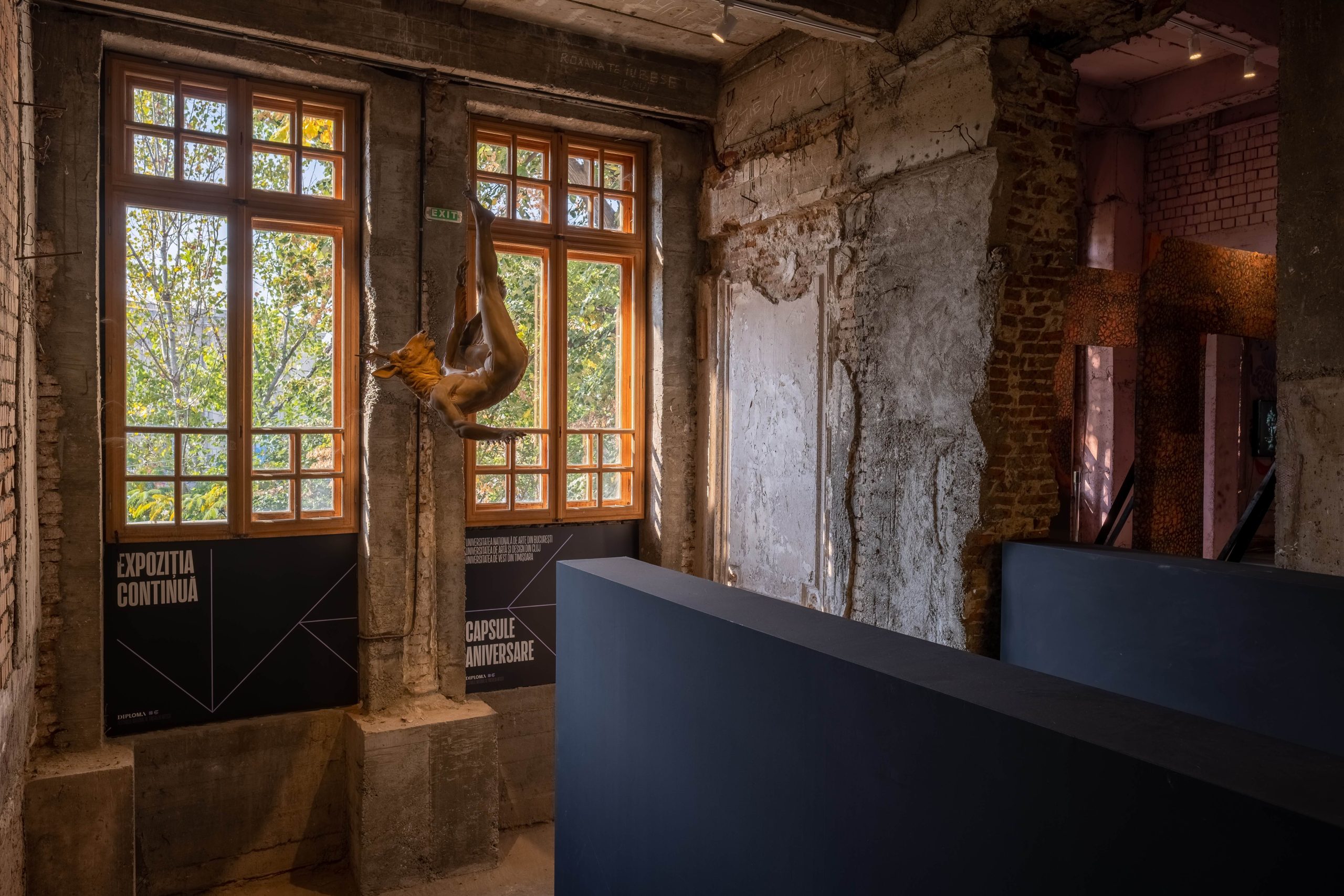
I would like to talk about the stages of your creative process, from the idea/source of inspiration to the moment of completing a work.
The source of inspiration is life. We are the sum of our life experiences. Maybe I am choosing a theme or a topic I empathize with more at a certain point in my life. So, it can be said the choice itself happens spontaneously.
Then usually follows the research of the basic idea. I am most interested in seeing how others have felt to represent it. Not infrequently I discovered that the work in my head, as I could see very clearly in my mind, had already been done a year or 400 years before. Many works that I delayed for years, were meanwhile done by someone else. Perhaps this is where access to a collective consciousness comes in.
Once I start making a new work, most of the time, 99% of the image is already modeled in my mind and like a 3D program, I can spin it in my head and imagine it in detail. The moment I complete it, it only changes subtly the final shape of the work. I never start doing something driven by a feeling and then see what comes out at the end, and when someone asks me: “Why did you do it this way?”, not know how to answer or say: “That’s what the artist wanted”.
The process of making it is mastery. Art is in everything, it is the way you see life. That is why I understand that anyone can be an artist and I believe in that. I do not agree with those who call themselves artists without knowing the language they have chosen to use or through which they have chosen to express their inner artistic vision.
Everything else is mastery/ skill and a lot of work. The subtlety comes when you feel which material (stone, wood, metal, etc.) your idea would be more alive, but until then you need to know the materials to be capable of making the right choice.
Do you put more emphasis on spontaneity or research?
I think everything is spontaneous because everything is a discovery and a momentary experience. I do not think the same artist can make the same work, identically, both on Tuesday, and on Thursday. This is noticeable when he does it repetitively, and something comes out differently every time. The moods of man fluctuate, and this gives the tone and momentary vibe of the work. So, it is about something concrete as an idea, perhaps a researched one, but which comes to life from the spontaneity of the moment. The idea is formed over time by an accumulation of factors and can be represented in an infinite number of ways. The state of the moment gives birth to the form.
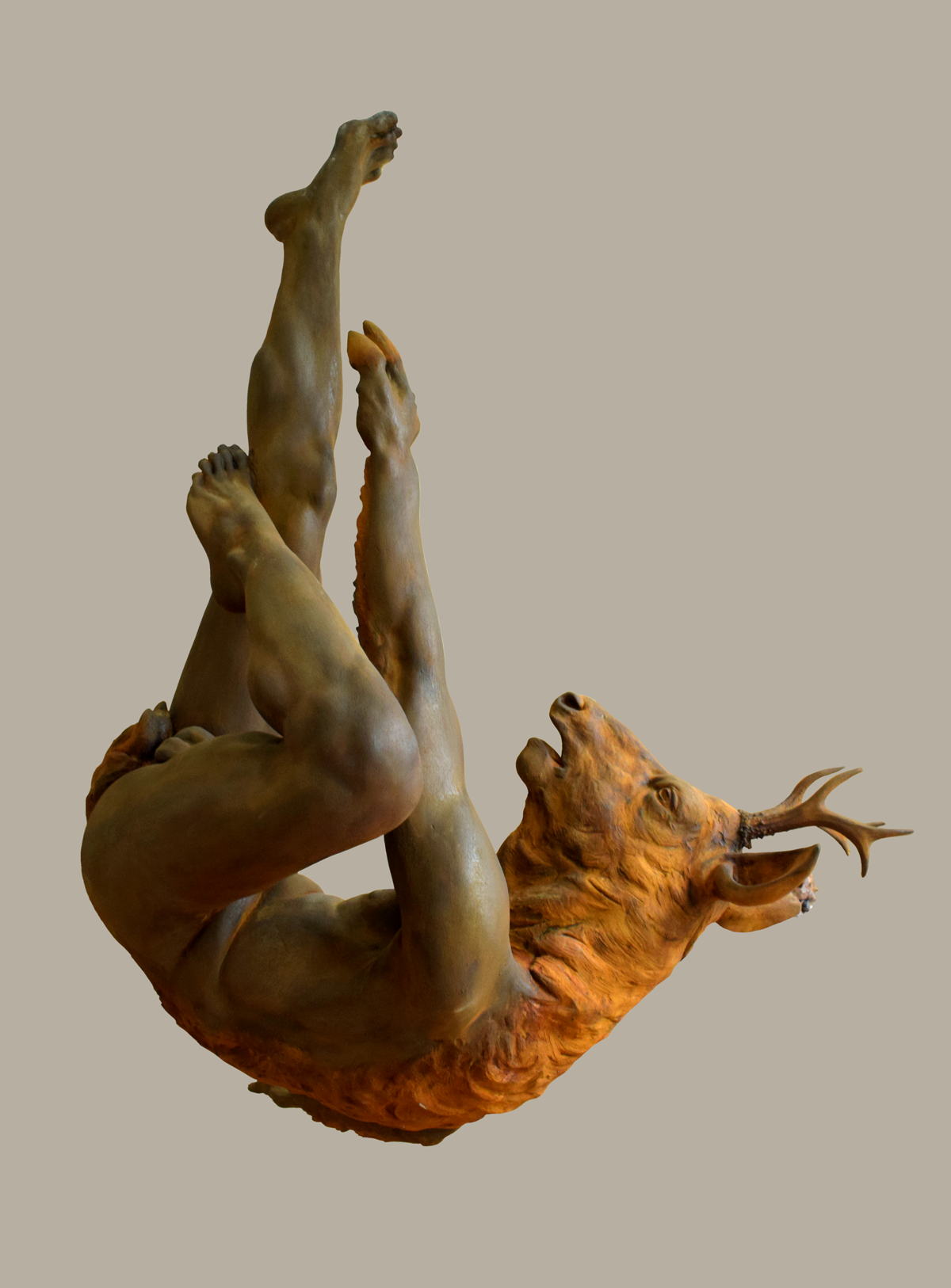

How do you manage to bring something different to the viewer, to be original?
I do this? I don’t know. I am not looking for that, anyway. I am just looking to do something that I believe in, that has some meaning to me, and that I feel is good to share with everyone.
I would like to know more about the whole experience until you are fully satisfied with the final result of the sculpture you are working on. Tell me, please, when you know that it is ready and you no longer have to intervene.
I never know. I have no personal work that I have done in more than 5 days regarding the creative part; but the technological process of translating it into stone, wood, or other material, can take months.
Everything settles down as an idea and as a form, and then I get to work, but it is that moment that gives it its final form. I try, when I am satisfied with the image, to photograph it in my memory, and not let the mood from the next day deviate from that route, because otherwise, it would never be finished. Each work is a part of an image permanently changing.
What would your works tell us if they could speak?
My works yell out, “Help!” and it’s the last cry many times. We either understand or we have failed. It is clear that we are not in a position to say, “No worry, it can still go on like this.” Reality inspires me. I am not good at climate or other studies, but if I can do a barbecue in a T-shirt in November, at 26 degrees, I think something is not right. I can remember that on this date I was struggling to form a toboggan run.
Your works raise an alarm to the viewers. In fact, how important is it to you to convey a message through them?
It is the only reason I do art. Once I have the idea and see it, feel it, all I have to do is share it with others, not verbally, but through this artistic language. I don’t do anything for myself. Everything is communication, and the art of each artist is the language through which he chose to express himself. That is why it is constantly studied so that the vocabulary is as diverse and complete as possible. Some convey a feeling through a splash of color. Others, through a form. Having complex ideas and feelings makes you an artist. Exhibiting them coherently for the viewer makes you a good craftsman who has studied the artistic language and can control it subtly.
At one point you told me that some people consider your works “a bit dark”. How would you describe your art?
Everyone is free to see, feel and interpret through their filter. I try so that the representations of my ideas only open the way for the viewer, which later everyone will build. I think that every problem has several solutions. I just ask the question, then everyone finds their solution.
My art is rare, unfortunately, because I rarely have the opportunity to express myself and then I repress. During the time I am missing from the studio, a lot of experiences happen to me, which generate even more thoughts. I tend to merge them all into one work. I know it is not good, that is why I give up a lot.
I just want my art to have an idea and feeling and also to convey it. I do not know how well I do it, but that is my goal: to communicate through art, through images.
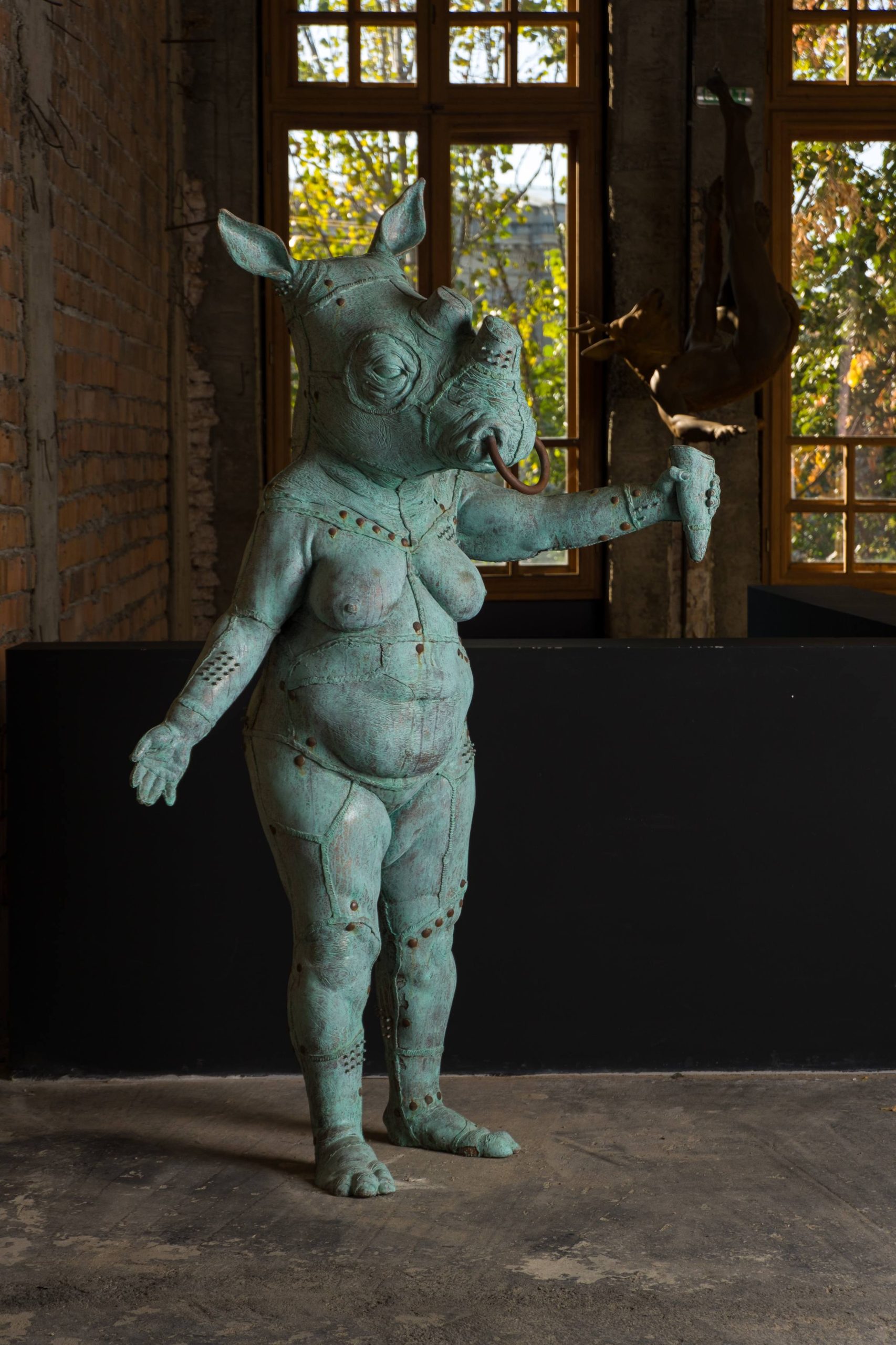

What does art offer you personally as a person? But as an artist?
It gives me almost nothing. I offer. That is how I see it: when I can, I do and others see what ideas go through my mind, for me – my truth. For others or how it gets to others – I have no idea. I would like not to impose myself but set the tone. Then each should see through their spectrum and filters.
Sometimes the artist gives the audience what it asks for. Could you choose to create for the viewers’ preference over your moods and desires?
Definitely not. There is no boss over my art, better than me. That’s why I do not ask for a living for my art. When you do this, you do it for survival. Then you lose your art, that is, your belief. In short, your soul.
Do you make art for yourself rather than for others?
No, I only do it for myself to a small extent. The longest period without art was 6 years. It is not about the money. Money is made, but I felt that art does not sell cheaply. I have felt that relative to how much I feel I am investing in it.
I understand that you have been on hiatus for several years regarding your artistic activity. How did you feel all this time that you were away from art?
I did not get away from it. I put it on hiatus after a mathematical calculation in which I have to live my daily life, but art was in me. After 6 years I exploded. I got three walnut logs. I cut them with the chainsaw in the bedroom, and I carved them. I went on and did another 4-5 works for myself. Then I partially set them on fire on the block, because I had this idea.
Was it like a revolt against those who disagreed with your journey as an artist?
I felt the need to create something. No, it was not a revolt directed at others. I did not care much about public opinion regarding my art. It was a recession. I cannot stay without art. 6 years seems to have been my limit. I am neither an artist nor a sculptor of our day. The concept of an artist, especially a sculptor, is too vague.


You studied at one point in Italy. Why did not you stay to practice there?
It is an illusion I left with and believed in. “Agony and Ecstasy” (n.n. biographical novel based on the life of Michelangelo Buonarroti) was the second book I learned to read, apart from the Bible. It was my book. Michelangelo’s life was a benchmark. At the age of 21, I was in Carrara – Italy and I was living my dream. The best of the best had stepped there. But it was not like that at all. It was bleak. It was not the elite.There were the ones who hit the mountain with a hammer to break it. Slabs were made for pavements, not sculpture. Technology had taken over the artistic Parnassus called Carrara.
I understand that it was not the right environment in which to develop as an artist…
Not at all in those years of crisis. We are talking about 2007-2011. In the school, as in our country, after 25 years you were still carrying the teacher’s coffee, as an assistant. There was no way to stay. I realized, in the four years I spent there, that everything that is “dirty” in our system is copied from them and not even entirely.
It did not happen in Italy, but if we are talking about Romania, what would you like the artistic environment in the country to offer you?
To offer me? Or give to artists? Everything. See countries like France, Italy, England, USA, and so on who make billions from art. Our artistic environment should provide creative spaces, and materials and let art happen, and then promote it and everyone would win. It would be simple. That is what I would do. We have cultural centers everywhere, relationships, funds, etc.
Very often when entering a contemporary art gallery, the audience asks themselves the famous question: “Is this art?”. Why do you think contemporary art is a challenge for the viewer?
Viewers have become a challenge for art, rather. Art is studied in schools by those who want to be artists. Its evolution can be observed, and it is understood and represented later, by professionals.
The audience is the problem. The viewer comes from another field, without ever having had much contact with art in his life, and he expects to understand it. It is like a foreign language to him, landed by plane in a country with a culture he knows nothing about and that also has a million dialects or as many dialects as there are speakers. The natives get along with each other because they share the same culture. You, coming from outside, cannot ask yourself: “Can what they speak be called a language? Does it make any sense?” The answer is yes. It is the oldest known language, and it is the universal language, but fewer and fewer are studying it.
In short, art has no problem. It will exist even when no one understands it anymore.
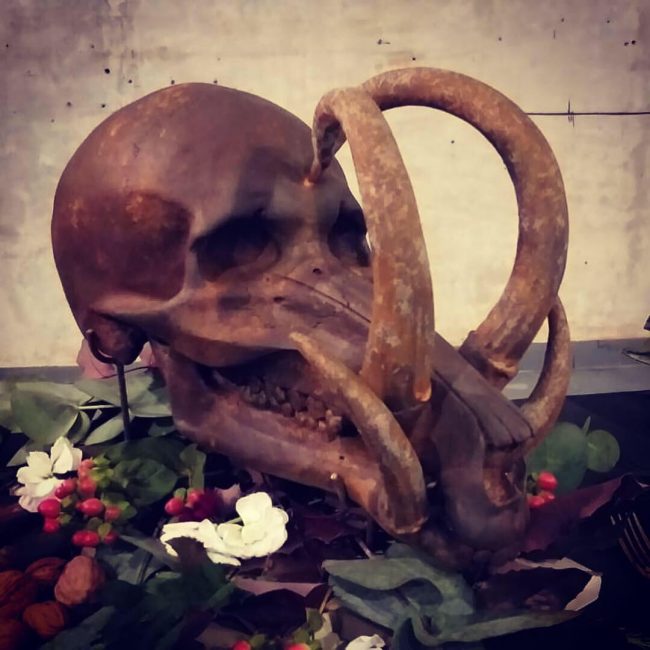

Most people might think that art must be an embodiment of beauty/perfection. What do you think?
It is needed. There has always been a need for idealization, but the idea of taking the contemporary man up, where he is not, seems outdated to me. It is rather a rat, guinea pig, experiment, or whatever, not an ideal embodiment, something equal to divinity. Art cannot be said to have evolved in the representation of man as the supreme being. Art is the mirror of reality from which it draws inspiration. This is the rule. The difference is how much we understand reality, and how we relate to it. That is what I am trying to do: open eyes to pressing issues that are being ignored.
As consumers of art, we sometimes wonder what turns something into a work of art. Can we consider art whatever an artist does or says?
Philosophically speaking, yes. It is easy to say this in the previous context in which the untrained viewer cannot even discern between a coherent art and one made at random. The discourse is held between those who study it and do it. A professional eye sees the small or great flaws in the expression of another who speaks his language. The rest just guess, like it or not how it sounds. What is actually being said remains to be studied.
There are also many self-taught people, who study the phenomenon with interest, and are passionate about knowing, finding out, and understanding, and even then they do not give their opinion, but just observe carefully, to learn something more. Those who don’t know much think they know the most and are the most vocal.
How can you judge the feeling of a man, put on paper, on canvas, scratched on a wall, or chiseled? As a viewer, you can only look for its meaning. The fact that you would have done it differently does not mean that he was wrong. Therefore, I do not believe that art can be defined too concretely, but one can only criticize the subtlety of the profession as a technique and approach to the subject, among connoisseurs.
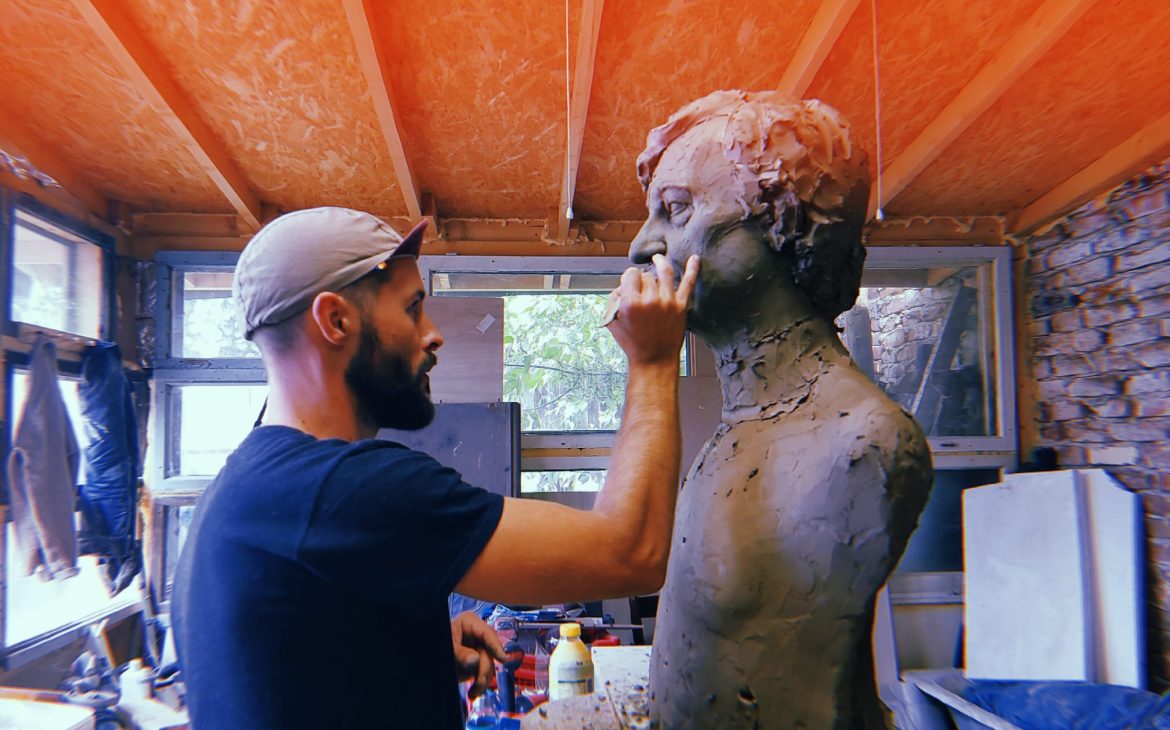
Who are the artists you like?
I like everyone I discover and consider them artists. If I came to call him an “artist” it means that regardless of the way of working, the message has reached me properly and I can only respect a professional.
What was your greatest achievement?
My greatest achievement was when I realized, at 14, that I was stupid. From then on life began. Not that I would be smart now. At least it is a start. It is one of my favorite jokes.
What do you expect from yourself as an artist?
I expect myself to never be satisfied with what I do. That would mean resignation, blasé, and therefore, stagnation from evolution. I want to be constantly better than yesterday. I do not care who thinks what or what they do. No one is to be judged. Everyone has their limits. I want to have no limits on myself.
What are your future projects?
I have many projects. Some, unfortunately, have expired. They were good, and suitable two to ten years ago. I could not do them then. Others I have done. My overall project is to understand the world in which I find myself. This has two beneficial values: to influence and to know enough not to let yourself be influenced, that the art of consumption, of prestige, of value, is everywhere. But do you want to be the “lucky winner of a non-winning lottery”, in the long run?
Which of the two valences do you focus on?
I mind my own business. I have many exhibitions and museums in mind. When I have money I make new works for others to see. Otherwise, I live life with ups and downs like everyone else. I put project sketches on fire to warm myself in the studio. There were good sketches that I do not remember. When you do not have money for wood, you burn drawings. That is how my art collection, almost complete, burned, volume after volume.


